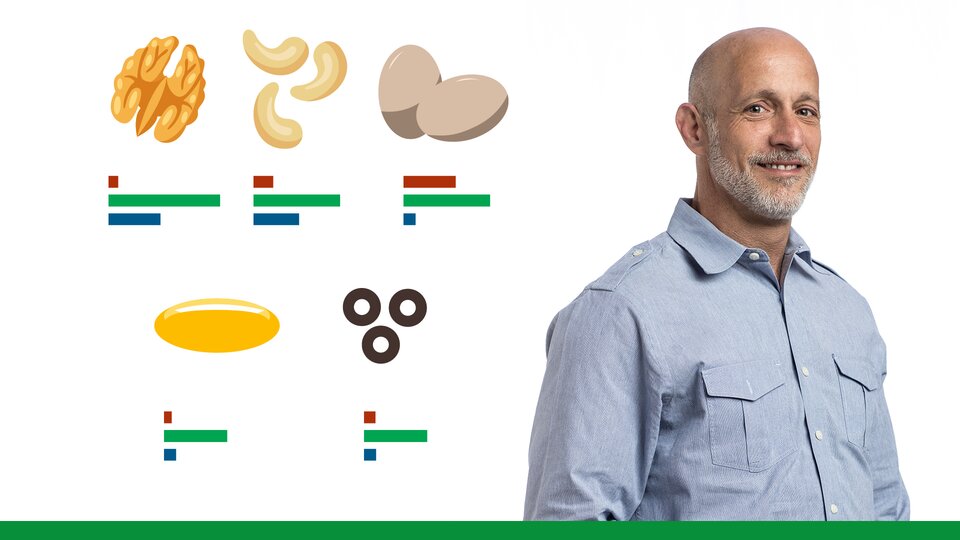Intro to Fitness Nutrition | Food as Fuel | Calories and Food Labels | Protein | Carbohydrates | Fats | How to Eat to Lose Weight | How to Eat to Gain Weight | Exercise and Nutrition | Supplements
Not that long ago, dietary fats were vilified and blamed for weight gain, high cholesterol, and many other problems. Today, they’re having a bit of a revival. Olive oil and even butter are back on the menu, and some fat-replacement ”foods” that were once kitchen staples, like margarine and shortening, aren’t nearly as popular as they used to be.
If this has all left you a bit confused, you’re not alone. This lesson will show you how to take a targeted, quality-focused approach to dietary fats.
Essential Ideas from the Video
-
Even the leanest person has plenty of stored body fat. The average man has about 100,000 calories of stored fat, as compared to the 1,500-2,000 calories known as glycogen, or carbohydrates. This stored fat is crucial! It insulates and protects your vital organs and is your body’s primary source of energy at rest and during low-intensity exercise.
-
Like protein, fats are also part of who you are. Body fat helps form cell membranes and is a major part of many organs, including around 60 percent of your brain.
-
Fatty acids also act as cellular messengers, helping proteins do their jobs, and helping you store and process essential nutrients and vitamins. They’re also essential for regulating levels of hormones such as testosterone—low-fat diets have been connected with decreased testosterone levels.
-
Saturated fats come primarily from animal sources like meat and dairy products, but some come from tropical nuts like coconuts. Another way to remember this is that they are all fats that are solid at room temperature.
-
Polyunsaturated and monounsaturated fats more often get labeled ”healthy” fats. We get these from nuts and seeds, certain vegetables like avocados or olives, and fish.
-
Trans fats are naturally occurring in small amounts, but the artificial variety has been connected to a number of series health issues and is best avoided.
-
The difference between these fats isn’t dramatic, it’s just a carbon molecule here or there. Fats are more similar than they are different, and when it comes to adding fats to your diet, the differences only become problematic when you dramatically over-rely on one type or another.
-
The same goes for omega-6 and omega-3 fatty acids. Omega-6 fats, which are located in abundance in many meats, vegetables, grains, and oils, have important health properties. But when we eat them to the almost total exclusion of omega-3s, as many people do, then they end up negating the good effects of omega-3s. In that case, the omega-6s can end up potentially causing inflammation and other problems.
-
A good goal, for health and performance, is to get away from a 10:1 omega-6 to omega-3 ratio and strive for more like 4:1. It’s also good to tip the scales more toward unsaturated fats and polyunsaturated fats, eating them about twice as much as you eat saturated fats.
-
A simple approach that allows you to get maximum benefits from healthy fats is to get most of your fat from non-meat sources like nuts, seeds, and vegetables, and have some at most meals. Eat fish 2-3 times a week if your diet allows it, and add a thumb-sized portion of oil, nuts, or avocado to meals regularly.
-
Rather than obsessing over types of fat, simply know your best fat sources and prioritize them when you assemble your meals every day. Rather than looking for a trick—like ”low-fat ice cream”—that seems to allow you to eat junk food more often, start by getting enough quality fat in the right portions in your diet regularly.

